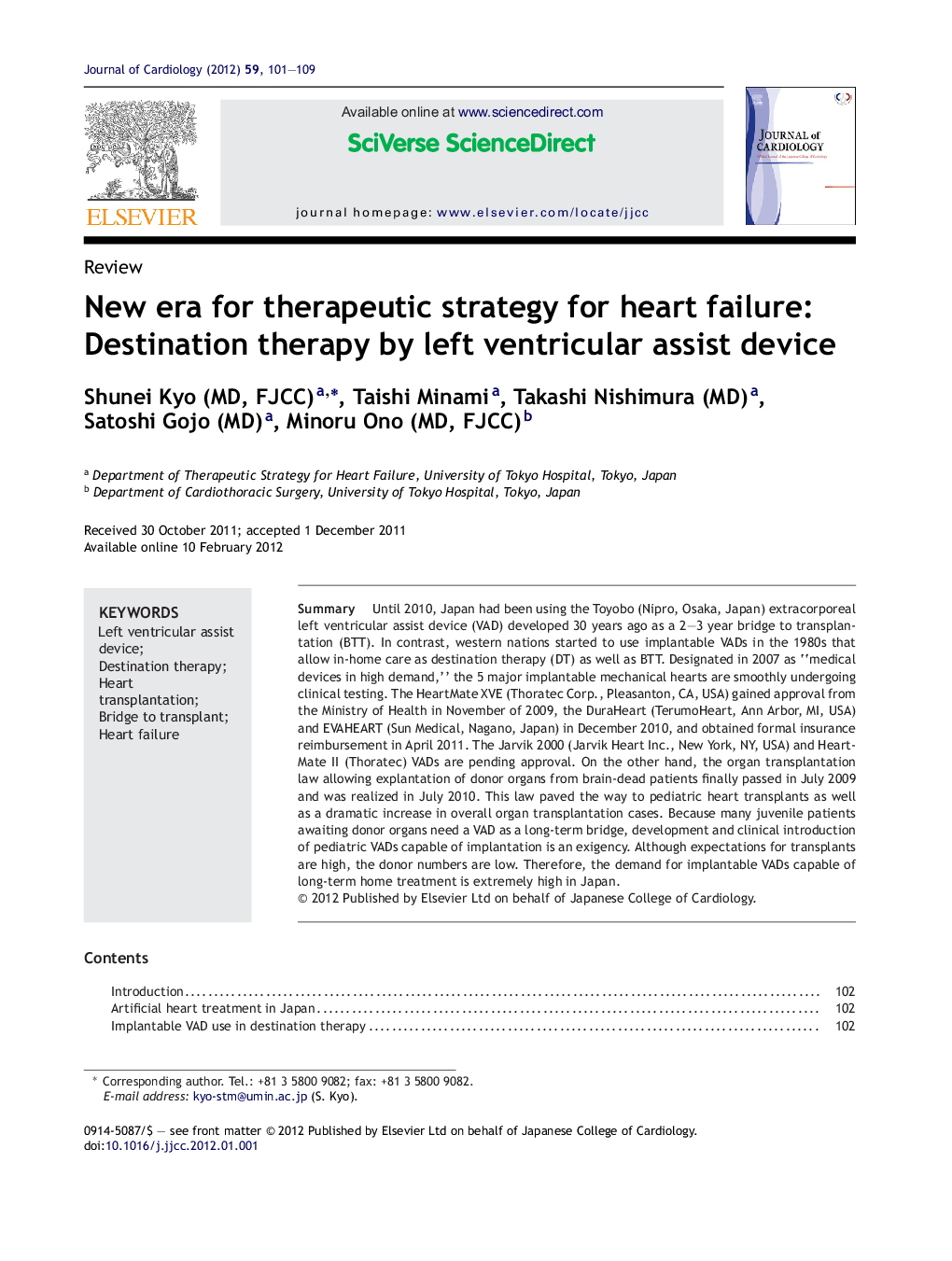| Article ID | Journal | Published Year | Pages | File Type |
|---|---|---|---|---|
| 2963229 | Journal of Cardiology | 2012 | 9 Pages |
SummaryUntil 2010, Japan had been using the Toyobo (Nipro, Osaka, Japan) extracorporeal left ventricular assist device (VAD) developed 30 years ago as a 2–3 year bridge to transplantation (BTT). In contrast, western nations started to use implantable VADs in the 1980s that allow in-home care as destination therapy (DT) as well as BTT. Designated in 2007 as “medical devices in high demand,” the 5 major implantable mechanical hearts are smoothly undergoing clinical testing. The HeartMate XVE (Thoratec Corp., Pleasanton, CA, USA) gained approval from the Ministry of Health in November of 2009, the DuraHeart (TerumoHeart, Ann Arbor, MI, USA) and EVAHEART (Sun Medical, Nagano, Japan) in December 2010, and obtained formal insurance reimbursement in April 2011. The Jarvik 2000 (Jarvik Heart Inc., New York, NY, USA) and HeartMate II (Thoratec) VADs are pending approval. On the other hand, the organ transplantation law allowing explantation of donor organs from brain-dead patients finally passed in July 2009 and was realized in July 2010. This law paved the way to pediatric heart transplants as well as a dramatic increase in overall organ transplantation cases. Because many juvenile patients awaiting donor organs need a VAD as a long-term bridge, development and clinical introduction of pediatric VADs capable of implantation is an exigency. Although expectations for transplants are high, the donor numbers are low. Therefore, the demand for implantable VADs capable of long-term home treatment is extremely high in Japan.
